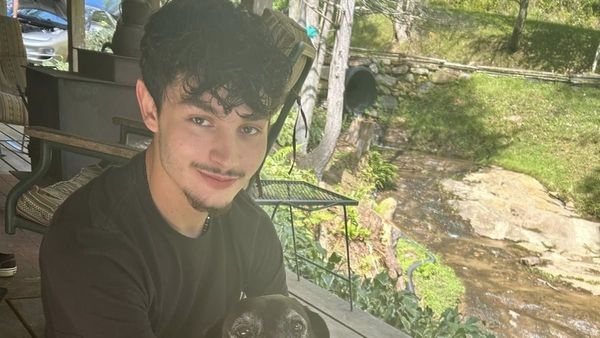
We are all photographers now, with a phone in our pocket ready to capture life, love and everything in between – which, quite often, is incredibly mundane, such as what we had for lunch. But how can you make sure you are taking the best possible pictures? Here, photographers share their top tips.
Use what you have to hand
“The best camera is the one in your hand,” says the Guardian photographer Sarah Lee. “How many of us have seen something that would make a wonderful photograph and had nothing to record it with? The good thing about a cameraphone is that you tend to have it on you.”
As a professional photographer, Lee tries to carry a Leica with her everywhere, “but sometimes I don’t have it and I’ll see a shot”. Luckily, phone cameras are pretty good these days. “Early phone photography was terrible,” she says. “It used to be a throwaway image. Now, you can get good, credible, high-resolution images.”

Don’t just point and click
“Take photos with care and consideration, whatever the camera in your hand,” says Lee. “If it is your phone, don’t just hold it up and point it at the scene and think that works. Try to consider the light, the composition, how you’re going to frame it. Give the camera in your phone the same respect that you would give any camera.”
Make the most of the tools available – if you want to
“I don’t really like that a lot of phones put in smart software to make the sky look better or do high dynamic range (HDR), because, as a photographer, I like to have control,” says Lee. “One thing that is really useful on an iPhone is, when you hold your finger on the screen while taking a picture, there is a yellow bar; you can play with exposure and think about the light.”

To zoom or not to zoom
“Don’t be afraid to use your legs as the zoom, to walk closer or further away,” says Lee. “You’ll notice most photographers when they work are crouching or bending in strange ways. I’m always surprised if I see a picture of myself working, because I’ve often got my bum up in the air. You’re doing that to make all these tiny adjustments to make the framing better.”
Control conditions as best you can
“With landscape photography, the first step is to know when you’re going to have a chance of a great photo,” says Will Davies, Britain’s Landscape Photographer of the Year for 2022. “Misty mornings in autumn, the transition from snow to clear weather in the winter – these are the conditions where your odds will be high.”

Do your research
“When it comes to getting the shot, practice and research will help,” says Davies. “Returning to locations that have worked before, gathering insights from other photos you’ve seen – all of this will help increase your chances. I also believe in opportunism and adapting to the conditions. Sometimes, the best shot is not the one you planned, but the one you just happened to see on that day.”
Light is everything
“With landscape photography, a common challenge is that foregrounds tend to be too dark and skies too bright. I am always looking for opportunities to reverse that – for example, where the sunlight is hitting the foreground, but the background is in cloud,” says Davies. “Similarly, if you can find a scene where light is hitting an interesting focal point, while the borders of the frame are in shadow, this can create a great effect.”

Work with the light you have
Ali Smith, a photographer from New York City who now lives in Norwich, says it is almost not worth bothering with the flash on a phone. “It only offers one direction for a light source out of 360 degrees of options,” she says, adding that there are likely to be much better options. “If you hit a subject such as a person with the flash, most often your phone will expose the person and underexpose what’s behind or around them. Fine if that’s what you’re going for, but limiting if not.”
Don’t be afraid to break the rules
Smith was a punk musician in the 1990s and got into photography through shooting at gigs, which she describes in her new book, The Ballad of Speedball Baby. When taking a photo, “there are two different ways that I think”, she says. “One is emotionally driven and one is aesthetically driven. Aesthetically, I’d look at light, colour, texture; emotionally, I would throw that mostly out the window.”
Develop an eye for the perfect shot
“I really like colour and patterns,” says Smith, who is always on the lookout for complementary and clashing combinations. “I am a portrait photographer, so faces are endlessly intriguing to me.”

When she shot Ethan Hawke on a Brooklyn rooftop in 2020, “He showed up in a hole-ridden black jumper, but I thought the plain white T-shirt underneath was way cooler, so I suggested he lose the sweater,” she says. “Sensing my enthusiasm about the look, he felt confident and excited about it, too.”
Be aware of the background, Lee says. “Think: ‘Do I want that old Tesco bag in the background? Do I want those cables hanging down off that lamp-post?’ Be aware of other things in the frame. You often think: ‘That picture would be great if it didn’t have half a Honda Civic poking into it.’ If you can master that, it will improve your photos instantly.”
Don’t feel bad about using portrait mode
Some professional photographers hate portrait mode, as it seems like cheating, says Smith, but she says it can be a shortcut to taking great pictures. She also uses filters and crops and occasionally retouches images, although she is not a fan of airbrushing. “They are all tools to get to the same place,” she says.

Children can be excellent subjects …
… but they often need a little help to get the right pose. “It is useless to say: ‘Smile!’ unless you want them to have their tongue sticking out awkwardly,” says Smith. “You have to entertain, you have to elicit a response, you have to be taking a photo while you’re asking them about something, so they look as if they are thinking. But mostly what works is saying: ‘One, two, three, fart!’ You’ll get a big laugh.”
If they are having their picture taken with an adult, make sure the adult is ready for the shot, too; they can often be distracted by the child, Smith says. Lee employs a Donald Duck impression for children. “If you spring it at the right moment it will get their attention and they will turn and look at you. Very occasionally, they will cry.”
Animals are trickier to capture
“A high-pitched squeak will normally get an animal to turn its head and look at you with a sharp expression of interest,” says Lee. Out in the wild, “more expensive equipment does help”, says Davies. “Big telephoto lenses will open more opportunities for wildlife closeups, but they don’t come cheap. But there are exceptions. I was on Skomer Island in Pembrokeshire this summer and the puffins are so relaxed you can get great shots with any gear.”

Expressions are divisive
“I used to be obsessed with not smiling, because it was an acknowledgment that you’re taking a photo and this is a contrived situation,” says Smith. “But I just like to get something out of people, whatever that is. The point is that you’re participating and making something together. Without that, it’s not as interesting.” That said, contemplative expressions can be particularly effective, she says.
Lee never tells people to smile. She recalls how the revered Observer photographer Jane Bown once said she asks her subjects just to look at her. “I tell people to look at the lens as if they are looking at me, rather than the camera, as if they are concentrating on something interesting. Sometimes, that makes them laugh.”

Make a quick connection with your subject
When Smith photographed the US TV host Rachel Maddow, “I had five minutes to find a connection with her and elicit a response. This is a skill I’ve had to learn.” On photographing live music, Smith says: “Get close and shoot with a wide angle. Experiment with shooting directly into light sources. Be loose with your framing. Try to match the energy of what you’re photographing with the energy of taking the photos.”
Rediscover the lost art of conversation
“Talk to people,” says Jennie Baptiste, a photographer from London who covers music and youth culture. “I didn’t grow up behind a screen. I went out, I did vox pops, I went to Camden [in London] and talked to goths and took their portraits.” She says you need to make subjects “feel as relaxed as possible to capture the true essence of who they are”.
Find your unique style
“We are bombarded with images like never before, thanks to mobile phones,” says Baptiste. “We don’t tend to spend much time actually looking within the image. It tends to be a quick scroll and on to the next thing. If you want to make your photos captivating, you need to have some kind of strategic thinking as to how you’re going to engage your audience so that they stop and look at the image. The challenge is to create your own aesthetic style and not get heavily influenced by what you are seeing online.”

The power of black and white
“Black and white can convey a lot of emotion and fragility,” says Baptiste. “It brings a psychological connection with the viewer that isn’t necessarily there in colour images.” She enjoys playing with different tones, such as sepia and selenium, drawing on reportage photographers such as Don McCullin, and advises exploring the scale from black to grey to see the different effects they can bring. When Baptiste photographed the musician Roots Manuva – the image is in the National Portrait Gallery’s collection – she shot only in black and white.
Take selfies
“People should spend time at home taking lots of selfies,” says Smith. “You can learn how to control things such as exposure and focus. You have to look into those. Once you know, it’s something that’s easy to do on the fly.”
Lee hates turning a cameraphone on herself accidentally: “Every year it gets more distressing and you look like a dissolved puddle.” Instead, she says: “I’m quite a fan of taking arty selfies in mirrors. Lifts are my weakness. I’m also very fond of a bevelled edge on a mirror, where you get a double effect and it looks quite noir.”
Don’t leave pics to rot on your phone
“Many people will have thousands of photographs on there,” says Baptiste. “But photo albums are a wonderful thing. I grew up in a family with lots of photo albums. I would regularly spend my weekends looking through photos and immersing myself in my family history and heritage, because I was born here, but my parents are from Saint Lucia. The challenge, because of our fast-paced culture, is taking time out to make albums. Reflecting on achievements and occasions with friends and family can help you mentally.”
Smith adds: “You must make sure you print them. If that phone breaks or gets stolen, they could be gone.”







